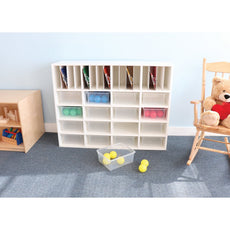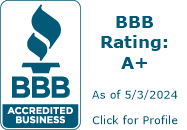
Kindergarten Cubby & Tray Buying Guide
Kindergartners have a whole kit and caboodle of learning materials to help them in the classroom. If your class lacks efficient storage solutions, finding them can be like looking for a needle in a haystack. This guide provides helpful tips to make buying the right kindergarten cubby and tray easier.
School Outlet’s Tips
-

Consider the Material
Choose non-toxic, sturdy materials that comply with safety standards. Ensure smooth, splinter-free edges and a build that withstands daily use.
-

Size and Proportion
Select cubbies based on your classroom layout, student count, and storage needs. Ensure they are large enough for storage but not obtrusive.
-

Safety Features
Opt for cubbies with curved edges to prevent injuries. They should be stable or anchorable to avoid tipping hazards, especially for taller units.
-

Functionality
Select dividers that double as markerboards or tackable surfaces. This multifunctionality maximizes utility and saves space, providing both separation and additional writing or display areas.
-

Maintenance
Select sinks with smooth, non-porous surfaces that are easy to clean and maintain. Regular maintenance ensures hygiene and functionality, extending the lifespan of your sink.
-

Aesthetic and Design
Select cubbies in colors and patterns that create a kid-friendly, engaging look. Coordinate with other classroom furniture for a cohesive and appealing environment.
Kindergarten Cubby & Tray Styles
-

Jonti-Craft Storage Cubbies
The Jonti-Craft Storage Cubbies come in designs like bin storage, mobile cubby storage, adjustable sectioned storage, and overhead storage. Their sturdy wooden construction offers a classic look. These cubbies feature an empty tray design for open and accessible storage for kindergarten classrooms. They can be ordered in different configurations that fit 10 to 30 trays.
-

Young Time 20-Tray Cubby Unit
The Young Time 20-tray cubby unit maximizes storage capacity with its large 26.5" high x 48" wide x 15" deep cubby spaces. It can comfortably fit backpacks, lunchboxes, and school supplies. The open-front design allows teachers to monitor contents and students to store and retrieve items independently and effortlessly. You can also add plastic trays of various colors.
-

Young Time Multi-Section Cubby Unit
The Young Time multi-section cubby unit features multiple divided sections and tray inserts to organize your classroom essentials efficiently. It is constructed using durable maple and laminate wood. The lower portion has 15 cubbies for storage and 21 compartments with removable document dividers. This variety of cubby sizes in one unit provides your students with space to store multiple items.
-

Young Time 25-Tray Cubby Unit
As the name suggests, the Young Time 25-tray Cubby Unit has 25 individual tray cubbies to provide space for every child's belongings. Each cubby measures 48"x 15"x 32 1/2" to accommodate backpacks, lunchboxes, etc. It comes with 25 clear plastic storage trays. The open, accessible front design allows students to store and retrieve items easily.
-

Luxor Mobile Organizer
The Luxor Mobile Organizer's wheeled cart design brings convenience and portability to classroom storage. It features a sturdy steel frame with guide rails holding a polypropylene tub weighing up to 20 pounds. The unit has a built-in safety feature that prevents bins from moving accidentally. It has four casters, two of which have locking brakes.
-

Certwood Mobile Organizer
The Certwood Mobile Organizer has different configurations that fit six, nine, twelve, eighteen, or twenty-seven modules. The trays come in various hues to match your classroom decor. Each tote tray features a unique dual labeling system. The frame is a fully welded 1” square 16-gauge steel tube frame with rubber casters that support up to 400 lbs each.
Frequently Asked Questions
-
Absolutely! Kindergarten cubbies and trays must meet or exceed rigorous requirements set by organizations like the Consumer Product Safety Improvement Act (CPSIA) and Greenguard Environmental Institute (GEI). These certifications mean the product is safe to use in sensitive environments such as your classroom. Also, pay attention to safety features like rounded edges and unit stability.
-
You can ensure it by anchoring any freestanding cubby units to the wall using safety straps or hardware provided by the manufacturer. It prevents the unit from tipping over. You can also use furniture anchors to secure the bottom of the unit to the floor for added stability. Follow all installation instructions carefully.
-
The best way to clean and maintain the cubbies is to wipe them down with a damp cloth. It removes light dirt, smudges, and debris. You can use a mild soap and warm water solution for deeper cleaning. Avoid harsh chemical cleaners or abrasive scrub pads that could damage the finish or material. Dry thoroughly after cleaning to prevent moisture buildup.
-
As a general guideline, you will want at least one cubby slot per student to store personal belongings like backpacks, lunch boxes, and supplies. It allocates each child their own designated, organized space. You may also want to get a few extra cubbies than your class total to allow for storage of classroom materials and supplies.















